useless lesbian |18 | I’ve made it my goal to spread positivity and uplift other artists and if you’re reading this YOU’RE NEXT | I’m always down to chat!
Last active 2 hours ago
Don't wanna be here? Send us removal request.
Text
If I could block one thing from ever appearing on my dash ever again it would be the theory that humans are "persistence hunters"
Please use the WONDERFUL brain that evolution gave you for THREE SECONDS.
What seems unique about humans at first glance? Our legs? Our sweat glands? Our stamina? Or perhaps OUR GODDAMN BRAINS. The things in the GIANT SKULLS that we EVOLVED WIDER HIPS so we could fucking fit through the gap when we gave birth. The MASSIVE ENERGY SINKS that make us distinct from every other species on Earth. THOSE THINGS.
Do you think, perhaps, there might be a REASON we evolved those brains? Perhaps we probably wouldn't have evolved them, if there wasn't a DAMN GOOD REASON they were necessary/useful for our survival?
Can you think of any ways to acquire food where a large brain might be helpful? Perhaps using tools to crack nuts, or figuring out where to dig for potatoes, or remembering where the good fruit trees are, or using tools like spears to catch fish or shoot birds, or trapping game, or knowing how to tap trees for sap or boil bark for tea, or remembering a wide variety of different kinds of foods and how to get them.
Hmm, maybe that seems like a plausible way humans could've used those giant brains, yeah? Other animals outcompete us in the chasing-down-game department. Trust me, you are not better at hunting gazelles than a cheetah is. You ARE better than a cheetah at remembering fifty different food sources in your territory - good berry bushes, rabbit dens, fish traps, places to dig for potatoes, trees with nuts - and figuring out how to exploit them all. You are DEFINITELY better than a cheetah at using tools.
Wanna know what early tools were like? GIANT FUCKING ROCKS. That we smashed into smaller, sharper rocks so we could use them for shit. But still, archaeologists have found tons of early tools that are basically heavy rocks that have been smashed up until they got a sharp edge to them.
You can run for three days. Can you run for three days CARRYING A BIG HEAVY ROCK? No. You fucking can't. So which seems more plausible to you - that humans evolved to exploit a "persistence hunter" niche, or that humans evolved to exploit a "tool user" niche?
Can you run for three days CARRYING A BABY? Because, you know, human young are some of the most helpless young around. Thanks in part to our GIANT FUCKIN' BRAINS that still need to develop for multiple years after birth. So when you're doing all this persistence hunting, are you carrying the kids with you? Or are you leaving them behind while you chase a deer down for three days, then spend another three days carrying the deer carcass back to camp? Does that seem energy-efficient to you, lugging an entire fucking deer carcass back to camp after chasing the deer for multiple days?
Does the idea that we're supposed to run for days on end seem, maybe, just a little bit, incompatible with everything you know about human evolution?
Have you even thought about the fact that we didn't evolve on, like, some perfectly flat plain with infinite line-of-sight? All the evidence suggests we evolved in a mixed environment - savannah with lil patches of woodland. So, like, if the gazelle is faster than you, what happens when the gazelle goes behind a tree or over the horizon and you can't see it anymore? Do you just sorta keep wandering in the general direction of the gazelle and hope you catch up? Are you proposing that humans could track the gazelle? And if we had the capability - the knowhow and the environmental requirements, like soft ground that leaves footprints - to track a gazelle, WHY WOULD WE CHASE IT? Doesn't creeping up on it and then whacking it with a sharp rock seem way easier? If, you know, we have the ability to track it down and we don't need to rely on just chasing whatever we spot? If we have the GIANT FUCKING BRAINS that make us capable of coming up with a plan like "hit the gazelle with a sharp rock"?
The fucking Wikipedia page on persistence hunting is missing so many fucking citations for basic fucking things BECAUSE IT'S JUST A WRONG THEORY. We came up with that idea decades ago. Over the decades, we have had LOTS of dumb as fuck ideas in the study of human evolution. Don't fucking get me started on aquatic ape theory. It's fucking wrong, there is no evidence for it, but the guy who PULLED IT DIRECTLY OUT OF HIS ASS went to Harvard so I guess it must be scientific! Anyway don't trust Wikipedia articles that say "[citation needed]" more often than they say sentences that MATCH UP TO ANYTHING YOU KNOW ABOUT HUMANS.
There is no evidence for persistence hunting theory. Look at the remains left by early humans. Big variety of prey types, often young healthy animals. Persistence hunters would catch the youngest or elderly or sick animals because they'd be the first to slow down. That's not what we see in the human fossil record.
The few surviving tribes and clans of hunter-gatherers don't practice persistence hunting. Most of them use a wide VARIETY of techniques based on BEING SMART and USING TOOLS - like catching fish, shooting birds with arrows, digging for tubers, levering clams off rocks, collecting fruit, trapping small animals, tapping trees for sap, cracking nuts, boiling tough plants to make them chewable, etc etc. A few of them have really specialised diets involving lots of meat because they've adapted to become whale-hunters or seal-hunters or whatever in extreme environments. Those guys use spears and boats and stuff. There are a FEW examples of extant hunter-gatherers using persistence hunting. There's also decent evidence that men in these tribes mainly catch game as a form of fucking SEXUAL SIGNALLING, since their contribution to the tribe in calorie terms is less than the women who pursue actually efficient methods of acquiring food. Men hunt to show off, compete with each other and find mates. Women actually have kids to feed and therefore they only really hunt small game. With tools and traps.
Something incredibly important to consider, in evolution, is what happens if your strategy doesn't work? What happens if you go to the tree and find the fruit has already been eaten by birds? That's fine, you just continue moving through the woods, going off to try another tree or gather nuts or check your traps. What happens if you chase an antelope all day and it gives you the slip? You've just wasted an entire day and you're tired and hungry, miles from home, without any food, quite possibly lost. You better have some system for sharing food so that you can get something to eat off one of the other squads whose hunts found more success. Oh wait, you have NO IDEA where those other squads are, because they've been off CHASING ANTELOPE IN A DIFFERENT DIRECTION. So much for the evolutionary value of human social bonds and cooperation.
The theory has even involved fraud! There were movies and books where tribes hunted down an antelope using persistence hunting, and the truth is that the "scientists" making the film gave the humans lifts in their Jeeps because the hunters were tired and thirsty and hungry! And in fact, some of the hunts that were used as "evidence" in "documentaries" took like 2 weeks - THINK ABOUT THIS FOR TWO SECONDS. Can you go two weeks without water? Absolutely fucking not. What happened? The scientists were ferrying the hunters back to base camp for water every night because otherwise the hunters wouldn't agree to be in the damn film because they were worried about DEHYDRATING TO DEATH IN THE DESERT.
Is it even true that running on two legs is somehow super efficient? No. Do we have unusually good thermoregulation? This has been debated for decades but I'm pretty sure the answer has not come up conclusively yes. It is CERTAINLY not true that "humans sweat but all other animals pant". That is something that the inventor of persistence hunting theory MADE UP. He invented it. He fabricated it entirely. Lots of animals sweat. He just invented the idea that sweating is uniquely human, decided that this would make us better at thermoregulating and therefore we could chase down prey until the prey overheated, and..... he published it somehow. Idk, standards were really low in those days?
Many prey animals that existed in our ancestral environment routinely have larger ranges than humans. They ordinarily range marathon distances just... in the normal course of their daily activities.
Do YOU feel like the kind of person that would be happy running a marathon every day? Or does that sound like LITERAL HELL to 99% of people?
What about wandering around in a forest grabbing a whole variety of things - nuts, fruit, fish - then bringing them back to your nearby camp where your kids are? Sounds better right? Sounds more like a thing that you, a human being, would plausibly ever want to do??
I'm pretty bad at citing stuff so you'll just have to fucking Google because I no longer have the jstor access to find all the papers that I read as an undergrad. Please rest assured that this is one of the areas of evolution where you can use your COMMON SENSE. Genuinely.
You already know that you are a SMART creature who enjoys being SMART. You are NOT a natural marathon runner who wants to run marathons every day. You are just not. You know you are not. Your one-year-old child is certainly not able to keep up in running marathons every day, and you are not going to run an entire marathon and kill an antelope AND THEN CARRY THE ANTELOPE'S BODY HOME so your child can eat. Stop spouting nonsense about this.
You were not born to run. You were born a clumsy, helpless, huge-skulled creature who unsteadily climbed onto hind legs so you could use hands to wield tools. You have the biggest brain in the damn animal kingdom, so act like it. Expensive complex things like brains don't just randomly evolve for no reason. There needs to be intense selection pressure. Something is killing off all the stupid humans. Something is enabling the smart humans to have lots of kids. This is why you, after millenia of evolution, have the ability to spread misinformation on tumblr dot com. A gazelle does NOT have this ability because it can't fucking read. Do persistence hunters need to be really really smart? Do they need to be able to read? No. Not at all. They need to have immense stamina. We know what persistence hunters look like. They look like wolves. Are you a wolf? Are you even remotely similar to a wolf? Would you have a better chance of surviving to reproduce if you had more wolflike traits? It's nonsensical. Utter nonsense.
Every single journal that still publishes this utter hogwash without caveats about the EXTENSIVE FRAUD AND FABRICATION needs to be fucking ashamed of itself. They need to be stripped of the title of scientific journal. For God's sake. No, humans can't run around in Ethiopian heat for days without water, THAT MAKES US DEAD. You already KNOW this makes us dead. You, ordinary tumblr user without an anthropology degree, know that you would die if you tried to run around in Ethiopian summer for days without water. Stop turning off the part of your brain that knows this when you read about human evolutionary theory.
Now there's an entire industry devoted to selling you this idea so they can convince you to buy more running shoes. You do not need their running shoes, you need to hug a tree and do the exercises which feel good and sustainable to you - which for most people is a short weightlifting workout and some walking through a park, not fucking marathon running.
Yes I am furious about something else (overwatch as a matter of fact) and no I shouldn't be taking it out on my tumblr. But like, sometimes I get really angry about misinformation to cope, okay. I'm sad. I feel way better after writing this. If you feel hurt by it then remember I am just extremely angry about a video game
892 notes
·
View notes
Text
‘While bats can only sense the outer shapes and textures of their targets, dolphins can peer inside theirs. If a dolphin echolocates on you, it will perceive your lungs and your skeleton. It can likely sense shrapnel in war veterans and fetuses in pregnant women. It can pick out the air-filled swim bladders that allow fish, their main prey, to control their buoyancy.
It can almost certainly tell different species apart based on the shape of those air bladders. And it can tell if a fish has something weird inside it, like a metal hook. In Hawaii, false killer whales often pluck tuna off fishing lines, and “they’ll know where the hook is inside that fish,” Aude Pacini, who studies these animals, tells me. “They can ‘see’ things that you and I would never consider unless we had an X-ray machine or an MRI scanner.”
This penetrating perception is so unusual that scientists have barely begun to consider its implications. The beaked whales, for example, are odontocetes that look dolphin-esque on the outside—but on the inside, their skulls bear a strange assortment of crests, ridges, and bumps, many of which are only found in males.
Pavel Gol’din has suggested that these structures might be the equivalent of deer antlers—showy ornaments that are used to attract mates. Such ornaments would normally protrude from the body in a visible and conspicuous way, but that’s unnecessary for animals that are living medical scanners.’
-Ed Yong, An Immense World
27K notes
·
View notes
Text


As epic, fucked up, and heartbreaking as the episode is, I kept thinking of this meme.
766 notes
·
View notes
Text
174K notes
·
View notes
Text
Favorite bird genre has got to be 'that's literally just a dinosaur'

Groove-Billed Ani

Hoatzin

Pheasant Coucal
112K notes
·
View notes
Text
If I tell you this is a horror dance number it still won't prepare you. That last move was so terrifying even the judge was like "Let go! Let go!" If you told me they're actually possessed I'd believe you.
The music is a remix of the song Mere Dholna from the Bollywood movie Bhool Bhulaiyya, a remake of the classic Malayalam horror-comedy Manichitrathazhu. It's about a young bride that seemingly becomes possessed of Manjulika, a dancer of the ancient royal court whose tragic death has turned her into a vengeful spirit, one who evokes the wrath of the goddess Durga Kali. In the iconic scene that is repeated across remakes, the groom and his family discover his bride dancing in the dead of night in a manic, disassociative fugue, wearing a moth-eaten dancer's costume and a face smeared in kohl, ash and vermilion. She's hallucinating that she's Manjulika dancing carefree for the court with her lover. The upbeat music is deliberately incongruous with the pathos and creepiness of the scene in reality, especially as it crescendos in the bride's head to the moment when the king decapitates Manjulika's beloved in a fit of jealous rage.
This specific number is by the all-male troupe B Unique, performed for the Indian reality talent contest Hunabaarz. It's a modern fusion based on Bharatnatyam that turns up the creep factor by 200% and is basically a showcase of contortionism and synchronicity. One of the most perfectly choreographed and executed dances I have ever seen. Truly incredible!
The group is still taking their work across the world's talent shows. And yes, that guy is hypermobile enough to do that with his neck. XD
54K notes
·
View notes
Text
a single andes chocolate mint from the olive garden can fully nourish an adult human for up to 96 hours
54K notes
·
View notes
Text
Conclave things that have stuck with me most after several watches and reading the book for comparison (I've mentioned some of this in other posts):
When Bellini berates Lawrence about his "precious doubts", he glances around first to make sure no one is going to hear. He's pissed off, but he knows the danger of rumour, and he doesn't want to get Lawrence hurt. It's such a tender little moment
Throughout the film, we get whispering and muttering, but it's never very clear what's being said. Until the end, when we can hear them all saying "Innocentius". After a discordant time of rumour and speculation, the Curia has finally united around Benitez
Lawrence's skullcap: he puts it on at the start when he needs to be professional, and tears it off after his improvised homily and the first time he sends Ray to do some investigating, as though he feels he is not worthy of his title. He's not wearing it at all when he sneaks into the Pope's room. But when he distributes the reports, it's back. He knows this is his duty
The book has a big focus on the role of the media, and we do get some mentions of that in the film (helicopters, camera flashes, etc) but it's incredibly stripped back. The film even changes some scenes to emphasise the role of rumour in such an insular place. For instance, the theatre room does not exist in the book, but in the film it provides space for Bellini's group to plot alone
The shroud over the dead Pope's face, and the ribbon and around the door, flimsy tradition contrasted with the heavy mundanity of the paramedics removing the body
The candles all around the Pope's photo, which are the same as the candle in Benitez' room
Ray letting Lawrence use his glasses to read, which has obviously happened before. I love the solid ground that Ray provides Lawrence
In the book, Tedesco is terrible at Latin despite, as in the film, demanding it be brought back. The film provides a visual standing for this with the vape. He doesn't actually want tradition, he's just using it as a veil for his bigotry
Bellini saying the Pope was "always 8 moves ahead", setting up all the Pope's machinations that appear later
Lawrence being the first person to notice when Agnes and Benitez are trying to speak to the cardinals
The nuns always working in the background. Their work is shown over and over but the film demands effort from the audience to notice, lest they become "invisible"
4K notes
·
View notes
Text
Fantasy Guide to Interiors
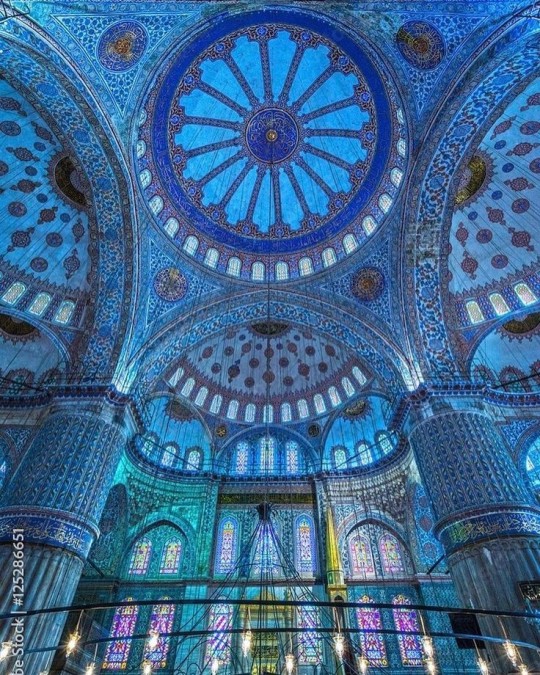
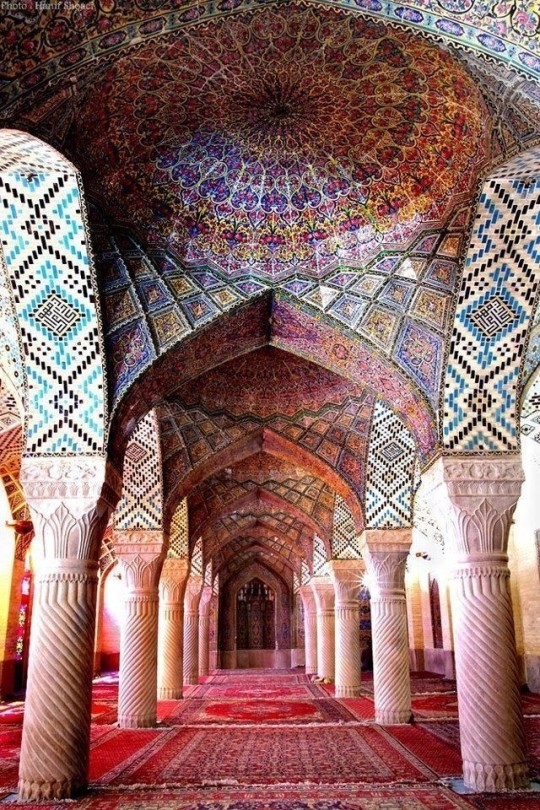
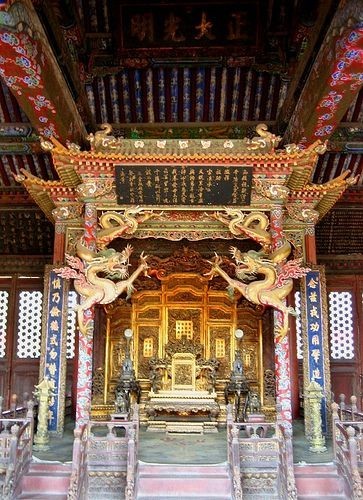
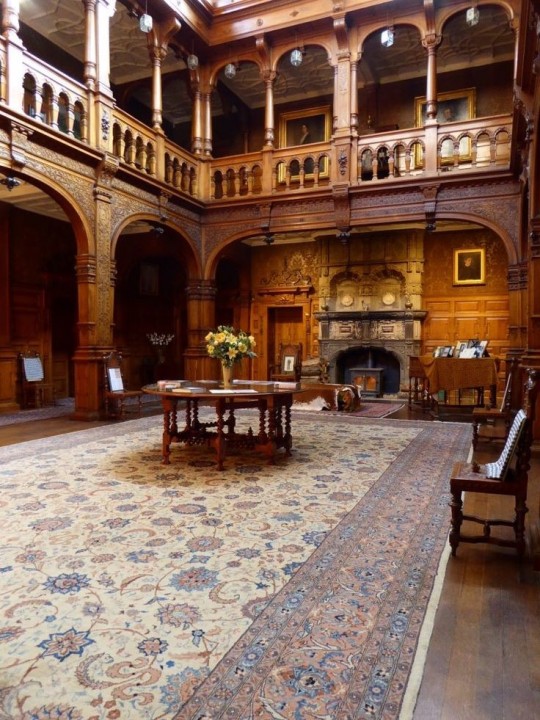
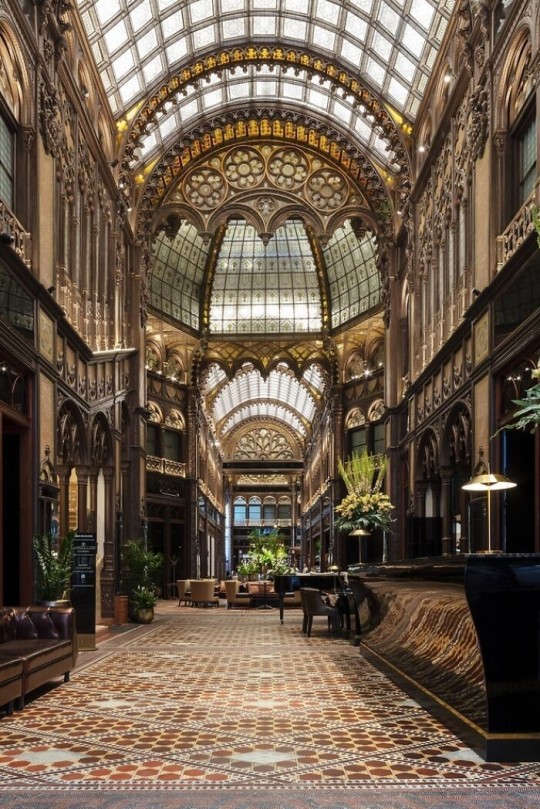
As a followup to the very popular post on architecture, I decided to add onto it by exploring the interior of each movement and the different design techniques and tastes of each era. This post at be helpful for historical fiction, fantasy or just a long read when you're bored.
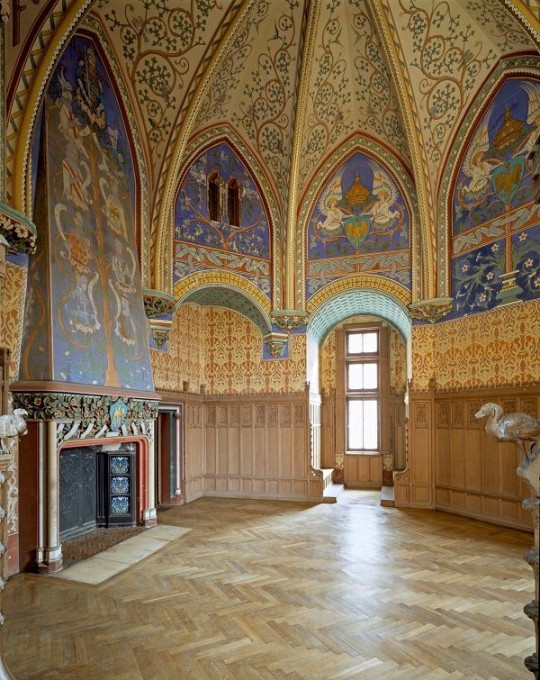
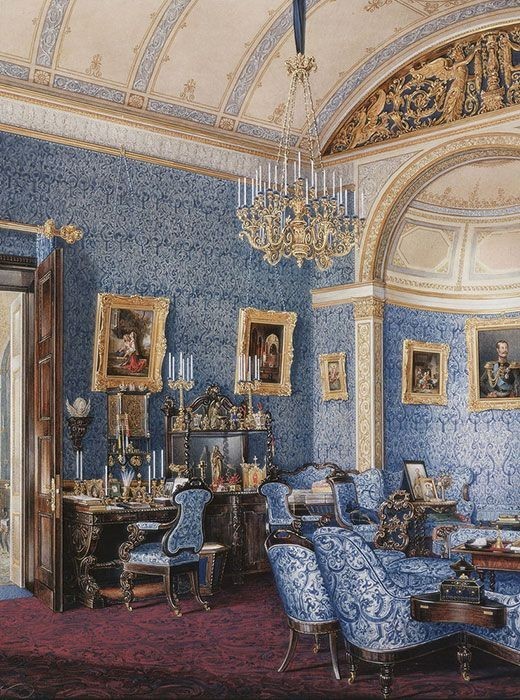
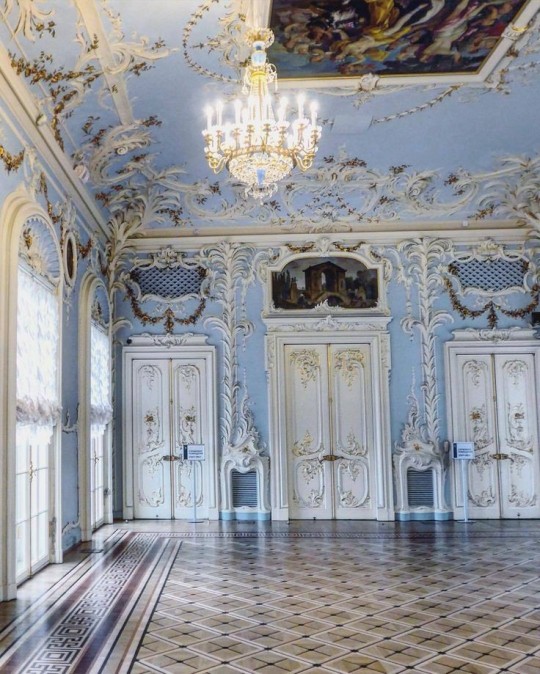
Interior Design Terms
Reeding and fluting: Fluting is a technique that consists a continuous pattern of concave grooves in a flat surface across a surface. Reeding is it's opposite.
Embossing: stamping, carving or moulding a symbol to make it stand out on a surface.
Paneling: Panels of carved wood or fabric a fixed to a wall in a continuous pattern.
Gilding: the use of gold to highlight features.
Glazed Tile: Ceramic or porcelain tiles coated with liquid coloured glass or enamel.
Column: A column is a pillar of stone or wood built to support a ceiling. We will see more of columns later on.
Bay Window: The Bay Window is a window projecting outward from a building.
Frescos: A design element of painting images upon wet plaster.
Mosaic: Mosaics are a design element that involves using pieces of coloured glass and fitted them together upon the floor or wall to form images.
Mouldings: ornate strips of carved wood along the top of a wall.
Wainscoting: paneling along the lower portion of a wall.
Chinoiserie: A European take on East Asian art. Usually seen in wallpaper.
Clerestory: A series of eye-level windows.
Sconces: A light fixture supported on a wall.
Niche: A sunken area within a wall.
Monochromatic: Focusing on a single colour within a scheme.
Ceiling rose: A moulding fashioned on the ceiling in the shape of a rose usually supporting a light fixture.
Baluster: the vertical bars of a railing.
Façade: front portion of a building
Lintel: Top of a door or window.
Portico: a covered structure over a door supported by columns
Eaves: the part of the roof overhanging from the building
Skirting: border around lower length of a wall
Ancient Greece
Houses were made of either sun-dried clay bricks or stone which were painted when they dried. Ground floors were decorated with coloured stones and tiles called Mosaics. Upper level floors were made from wood. Homes were furnished with tapestries and furniture, and in grand homes statues and grand altars would be found. Furniture was very skillfully crafted in Ancient Greece, much attention was paid to the carving and decoration of such things. Of course, Ancient Greece is ancient so I won't be going through all the movements but I will talk a little about columns.
Doric: Doric is the oldest of the orders and some argue it is the simplest. The columns of this style are set close together, without bases and carved with concave curves called flutes. The capitals (the top of the column) are plain often built with a curve at the base called an echinus and are topped by a square at the apex called an abacus. The entablature is marked by frieze of vertical channels/triglyphs. In between the channels would be detail of carved marble. The Parthenon in Athens is your best example of Doric architecture.
Ionic: The Ionic style was used for smaller buildings and the interiors. The columns had twin volutes, scroll-like designs on its capital. Between these scrolls, there was a carved curve known as an egg and in this style the entablature is much narrower and the frieze is thick with carvings. The example of Ionic Architecture is the Temple to Athena Nike at the Athens Acropolis.
Corinthian: The Corinthian style has some similarities with the Ionic order, the bases, entablature and columns almost the same but the capital is more ornate its base, column, and entablature, but its capital is far more ornate, commonly carved with depictions of acanthus leaves. The style was more slender than the others on this list, used less for bearing weight but more for decoration. Corinthian style can be found along the top levels of the Colosseum in Rome.
Tuscan: The Tuscan order shares much with the Doric order, but the columns are un-fluted and smooth. The entablature is far simpler, formed without triglyphs or guttae. The columns are capped with round capitals.
Composite: This style is mixed. It features the volutes of the Ionic order and the capitals of the Corinthian order. The volutes are larger in these columns and often more ornate. The column's capital is rather plain. for the capital, with no consistent differences to that above or below the capital.
Ancient Rome
Rome is well known for its outward architectural styles. However the Romans did know how to add that rizz to the interior. Ceilings were either vaulted or made from exploded beams that could be painted. The Romans were big into design. Moasics were a common interior sight, the use of little pieces of coloured glass or stone to create a larger image. Frescoes were used to add colour to the home, depicting mythical figures and beasts and also different textures such as stonework or brick. The Romans loved their furniture. Dining tables were low and the Romans ate on couches. Weaving was a popular pastime so there would be tapestries and wall hangings in the house. Rich households could even afford to import fine rugs from across the Empire. Glass was also a feature in Roman interior but windows were usually not paned as large panes were hard to make. Doors were usually treated with panels that were carved or in lain with bronze.
Ancient Egypt
Egypt was one of the first great civilisations, known for its immense and grand structures. Wealthy Egyptians had grand homes. The walls were painted or plastered usually with bright colours and hues. The Egyptians are cool because they mapped out their buildings in such a way to adhere to astrological movements meaning on special days if the calendar the temple or monuments were in the right place always. The columns of Egyptian where thicker, more bulbous and often had capitals shaped like bundles of papyrus reeds. Woven mats and tapestries were popular decor. Motifs from the river such as palms, papyrus and reeds were popular symbols used.
Ancient Africa
African Architecture is a very mixed bag and more structurally different and impressive than Hollywood would have you believe. Far beyond the common depictions of primitive buildings, the African nations were among the giants of their time in architecture, no style quite the same as the last but just as breathtaking.
Rwandan Architecture: The Rwandans commonly built of hardened clay with thatched roofs of dried grass or reeds. Mats of woven reeds carpeted the floors of royal abodes. These residences folded about a large public area known as a karubanda and were often so large that they became almost like a maze, connecting different chambers/huts of all kinds of uses be they residential or for other purposes.
Ashanti Architecture: The Ashanti style can be found in present day Ghana. The style incorporates walls of plaster formed of mud and designed with bright paint and buildings with a courtyard at the heart, not unlike another examples on this post. The Ashanti also formed their buildings of the favourite method of wattle and daub.
Nubian Architecture: Nubia, in modern day Ethiopia, was home to the Nubians who were one of the world's most impressive architects at the beginning of the architecture world and probably would be more talked about if it weren't for the Egyptians building monuments only up the road. The Nubians were famous for building the speos, tall tower-like spires carved of stone. The Nubians used a variety of materials and skills to build, for example wattle and daub and mudbrick. The Kingdom of Kush, the people who took over the Nubian Empire was a fan of Egyptian works even if they didn't like them very much. The Kushites began building pyramid-like structures such at the sight of Gebel Barkal
Japanese Interiors
Japenese interior design rests upon 7 principles. Kanso (簡素)- Simplicity, Fukinsei (不均整)- Asymmetry, Shizen (自然)- Natural, Shibumi (渋味) – Simple beauty, Yugen (幽玄)- subtle grace, Datsuzoku (脱俗) – freedom from habitual behaviour, Seijaku (静寂)- tranquillity.
Common features of Japanese Interior Design:
Shoji walls: these are the screens you think of when you think of the traditional Japanese homes. They are made of wooden frames, rice paper and used to partition
Tatami: Tatami mats are used within Japanese households to blanket the floors. They were made of rice straw and rush straw, laid down to cushion the floor.
Genkan: The Genkan was a sunken space between the front door and the rest of the house. This area is meant to separate the home from the outside and is where shoes are discarded before entering.
Japanese furniture: often lowest, close to the ground. These include tables and chairs but often tanked are replaced by zabuton, large cushions. Furniture is usually carved of wood in a minimalist design.
Nature: As both the Shinto and Buddhist beliefs are great influences upon architecture, there is a strong presence of nature with the architecture. Wood is used for this reason and natural light is prevalent with in the home. The orientation is meant to reflect the best view of the world.
Islamic World Interior
The Islamic world has one of the most beautiful and impressive interior design styles across the world. Colour and detail are absolute staples in the movement. Windows are usually not paned with glass but covered in ornate lattices known as jali. The jali give ventilation, light and privacy to the home. Islamic Interiors are ornate and colourful, using coloured ceramic tiles. The upper parts of walls and ceilings are usually flat decorated with arabesques (foliate ornamentation), while the lower wall areas were usually tiled. Features such as honeycombed ceilings, horseshoe arches, stalactite-fringed arches and stalactite vaults (Muqarnas) are prevalent among many famous Islamic buildings such as the Alhambra and the Blue Mosque.
Byzantine (330/395–1453 A. D)
The Byzantine Empire or Eastern Roman Empire was where eat met west, leading to a melting pot of different interior designs based on early Christian styles and Persian influences. Mosaics are probably what you think of when you think of the Byzantine Empire. Ivory was also a popular feature in the Interiors, with carved ivory or the use of it in inlay. The use of gold as a decorative feature usually by way of repoussé (decorating metals by hammering in the design from the backside of the metal). Fabrics from Persia, heavily embroidered and intricately woven along with silks from afar a field as China, would also be used to upholster furniture or be used as wall hangings. The Byzantines favoured natural light, usually from the use of copolas.
Indian Interiors
India is of course, the font of all intricate designs. India's history is sectioned into many eras but we will focus on a few to give you an idea of prevalent techniques and tastes.
The Gupta Empire (320 – 650 CE): The Gupta era was a time of stone carving. As impressive as the outside of these buildings are, the Interiors are just as amazing. Gupta era buildings featured many details such as ogee (circular or horseshoe arch), gavaksha/chandrashala (the motif centred these arches), ashlar masonry (built of squared stone blocks) with ceilings of plain, flat slabs of stone.
Delhi Sultanate (1206–1526): Another period of beautifully carved stone. The Delhi sultanate had influence from the Islamic world, with heavy uses of mosaics, brackets, intricate mouldings, columns and and hypostyle halls.
Mughal Empire (1526–1857): Stonework was also important on the Mughal Empire. Intricately carved stonework was seen in the pillars, low relief panels depicting nature images and jalis (marble screens). Stonework was also decorated in a stye known as pietra dura/parchin kari with inscriptions and geometric designs using colored stones to create images. Tilework was also popular during this period. Moasic tiles were cut and fitted together to create larger patters while cuerda seca tiles were coloured tiles outlined with black.
Chinese Interiors
Common features of Chinese Interiors
Use of Colours: Colour in Chinese Interior is usually vibrant and bold. Red and Black are are traditional colours, meant to bring luck, happiness, power, knowledge and stability to the household.
Latticework: Lattices are a staple in Chinese interiors most often seen on shutters, screens, doors of cabinets snf even traditional beds.
Lacquer: Multiple coats of lacquer are applied to furniture or cabinets (now walls) and then carved. The skill is called Diaoqi (雕漆).
Decorative Screens: Screens are used to partition off part of a room. They are usually of carved wood, pained with very intricate murals.
Shrines: Spaces were reserved on the home to honour ancestors, usually consisting of an altar where offerings could be made.
Of course, Chinese Interiors are not all the same through the different eras. While some details and techniques were interchangeable through different dynasties, usually a dynasty had a notable style or deviation. These aren't all the dynasties of course but a few interesting examples.
Song Dynasty (960–1279): The Song Dynasty is known for its stonework. Sculpture was an important part of Song Dynasty interior. It was in this period than brick and stone work became the most used material. The Song Dynasty was also known for its very intricate attention to detail, paintings, and used tiles.
Ming Dynasty(1368–1644): Ceilings were adorned with cloisons usually featuring yellow reed work. The floors would be of flagstones usually of deep tones, mostly black. The Ming Dynasty favoured richly coloured silk hangings, tapestries and furnishings. Furniture was usually carved of darker woods, arrayed in a certain way to bring peace to the dwelling.
Han Dynasty (206 BC-220 AD): Interior walls were plastered and painted to show important figures and scenes. Lacquer, though it was discovered earlier, came into greater prominence with better skill in this era.
Tang Dynasty (618–907) : The colour palette is restrained, reserved. But the Tang dynasty is not without it's beauty. Earthenware reached it's peak in this era, many homes would display fine examples as well. The Tang dynasty is famous for its upturned eaves, the ceilings supported by timber columns mounted with metal or stone bases. Glazed tiles were popular in this era, either a fixed to the roof or decorating a screen wall.
Romanesque (6th -11th century/12th)
Romanesque Architecture is a span between the end of Roman Empire to the Gothic style. Taking inspiration from the Roman and Byzantine Empires, the Romanesque period incorporates many of the styles. The most common details are carved floral and foliage symbols with the stonework of the Romanesque buildings. Cable mouldings or twisted rope-like carvings would have framed doorways. As per the name, Romansque Interiors relied heavily on its love and admiration for Rome. The Romanesque style uses geometric shapes as statements using curves, circles snf arches. The colours would be clean and warm, focusing on minimal ornamentation.
Gothic Architecture (12th Century - 16th Century)
The Gothic style is what you think of when you think of old European cathedrals and probably one of the beautiful of the styles on this list and one of most recognisable. The Gothic style is a dramatic, opposing sight and one of the easiest to describe. Decoration in this era became more ornate, stonework began to sport carving and modelling in a way it did not before. The ceilings moved away from barreled vaults to quadripartite and sexpartite vaulting. Columns slimmed as other supportive structures were invented. Intricate stained glass windows began their popularity here. In Gothic structures, everything is very symmetrical and even.
Mediaeval (500 AD to 1500)
Interiors of mediaeval homes are not quite as drab as Hollywood likes to make out. Building materials may be hidden by plaster in rich homes, sometimes even painted. Floors were either dirt strewn with rushes or flagstones in larger homes. Stonework was popular, especially around fireplaces. Grand homes would be decorated with intricate woodwork, carved heraldic beasts and wall hangings of fine fabrics.
Renaissance (late 1300s-1600s)
The Renaissance was a period of great artistry and splendor. The revival of old styles injected symmetry and colour into the homes. Frescoes were back. Painted mouldings adorned the ceilings and walls. Furniture became more ornate, fixed with luxurious upholstery and fine carvings. Caryatids (pillars in the shape of women), grotesques, Roman and Greek images were used to spruce up the place. Floors began to become more intricate, with coloured stone and marble. Modelled stucco, sgraffiti arabesques (made by cutting lines through a layer of plaster or stucco to reveal an underlayer), and fine wall painting were used in brilliant combinations in the early part of the 16th century.
Tudor Interior (1485-1603)
The Tudor period is a starkly unique style within England and very recognisable. Windows were fixed with lattice work, usually casement. Stained glass was also in in this period, usually depicting figures and heraldic beasts. Rooms would be panelled with wood or plastered. Walls would be adorned with tapestries or embroidered hangings. Windows and furniture would be furnished with fine fabrics such as brocade. Floors would typically be of wood, sometimes strewn with rush matting mixed with fresh herbs and flowers to freshen the room.
Baroque (1600 to 1750)
The Baroque period was a time for splendor and for splashing the cash. The interior of a baroque room was usually intricate, usually of a light palette, featuring a very high ceiling heavy with detail. Furniture would choke the room, ornately carved and stitched with very high quality fabrics. The rooms would be full of art not limited to just paintings but also sculptures of marble or bronze, large intricate mirrors, moldings along the walls which may be heavily gilded, chandeliers and detailed paneling.
Victorian (1837-1901)
We think of the interiors of Victorian homes as dowdy and dark but that isn't true. The Victorians favoured tapestries, intricate rugs, decorated wallpaper, exquisitely furniture, and surprisingly, bright colour. Dyes were more widely available to people of all stations and the Victorians did not want for colour. Patterns and details were usually nature inspired, usually floral or vines. Walls could also be painted to mimic a building material such as wood or marble and most likely painted in rich tones. The Victorians were suckers for furniture, preferring them grandly carved with fine fabric usually embroidered or buttoned. And they did not believe in minimalism. If you could fit another piece of furniture in a room, it was going in there. Floors were almost eclusively wood laid with the previously mentioned rugs. But the Victorians did enjoy tiled floors but restricted them to entrances. The Victorians were quite in touch with their green thumbs so expect a lot of flowers and greenery inside. with various elaborately decorated patterned rugs. And remember, the Victorians loved to display as much wealth as they could. Every shelf, cabinet, case and ledge would be chocked full of ornaments and antiques.
Edwardian/The Gilded Age/Belle Epoque (1880s-1914)
This period (I've lumped them together for simplicity) began to move away from the deep tones and ornate patterns of the Victorian period. Colour became more neutral. Nature still had a place in design. Stained glass began to become popular, especially on lampshades and light fixtures. Embossing started to gain popularity and tile work began to expand from the entrance halls to other parts of the house. Furniture began to move away from dark wood, some families favouring breathable woods like wicker. The rooms would be less cluttered.
Art Deco (1920s-1930s)
The 1920s was a time of buzz and change. Gone were the refined tastes of the pre-war era and now the wow factor was in. Walls were smoother, buildings were sharper and more jagged, doorways and windows were decorated with reeding and fluting. Pastels were in, as was the heavy use of black and white, along with gold. Mirrors and glass were in, injecting light into rooms. Gold, silver, steel and chrome were used in furnishings and decor. Geometric shapes were a favourite design choice. Again, high quality and bold fabrics were used such as animal skins or colourful velvet. It was all a rejection of the Art Noveau movement, away from nature focusing on the man made.
Modernism (1930 - 1965)
Modernism came after the Art Deco movement. Fuss and feathers were out the door and now, practicality was in. Materials used are shown as they are, wood is not painted, metal is not coated. Bright colours were acceptable but neutral palettes were favoured. Interiors were open and favoured large windows. Furniture was practical, for use rather than the ornamentation, featuring plain details of any and geometric shapes. Away from Art Deco, everything is straight, linear and streamlined.
5K notes
·
View notes
Text
okay anyway. alchemy. alchemy is the big thing in tmagp. balance is huge in alchemy. it is literally the basis of almost everything in it. tria prima--balance the three primes and you can do anything from turning lead into gold to raising the fucking dead.
the oiar is trying to keep everything in balance for the good of the people. lena herself says that in 13. to keep everything going and in check, the "opposing forces" need to be monitored and balanced. they manage the externals and monitor potential externals cases to make sure things are within a reasonable margin of chaos, maybe? that's why they give them specific assignments. bonzo and mowbray and possibly ink5oul if they'd said yes. you can still do all these things to 'feed' (lady mowbray declining refreshments because she'd recently eaten right after we hear a casement about her) but we're gonna tell you who to feed on because we need to monitor it and keep it balanced.
the magnus institute in this universe was heavily focused on alchemy. sam's whole thing that he saw at the institute where that dude just,,, shed his skin after fucking up some kind of experiment, over a person that was "naked and pale and still". maybe dr welling was trying to bring that person back to life?
when isaac newton got a little too crazy with alchemy, a couple of roberts said "hey, we need to Protocol this dude". it disturbed the "precarious equilibrium". threw something off balance. balance balance balance. throwing something off balance means enacting the protocol.
they talk about the great plague of london, enacting the protocol against the entire city. the great fire of london was in 1666, which is also when the great plague is said to have ended. isaac newton's lab caught fire, allegedly after his dog knocked a candle over. ironically in this context, the dog's name was diamond.
the magnus institute burned down.
i don't actually think a "magnus protocol" exists. i don't think there's a specific protocol named after the institute. i think it's a misnomer, we're thinking of it wrong. after all, the protocol is being referenced as existing as far back as the 1660's, but jonah's notes were dated 1845.
i think the Magnus Protocol is in reference to an incident. the enacting of The Protocol against the Magnus Institute. and i think the reason that any cases or information regarding "the magnus protocol" are blocked is because the OIAR is connected to the protocol being put into motion against the Institute and they don't want anyone knowing about it (the office used to be associated with starkwall--maybe?? maybe the oiar loaded the gun and starkwall pulled the trigger?)
there's so many moving parts here and i'm struggling to put them all together without a god damn corkboard and red string.
568 notes
·
View notes
Text
Something that I get chills about is the fact that the oldest story told made by the oldest civilization opens with "In those days, in those distant days, in those ancient nights."
This confirms that there is a civilization older than the Sumerians that we have yet to find
Some people get existential dread from this
Me? I think it's fucking awesome it shows just how much of this world we have yet to discover and that is just fascinating
71K notes
·
View notes
Text
youtube
this is like. GENUINELY the best edit i've ever seen in my life. full stop. let me reiterate: not just the best severance edit. THE best edit. the creator doesn't have a tumblr that i can find but i simply had to share.
17K notes
·
View notes
Text








being on this app is so surreal. americans are usually the ones that learn about other places and people everywhere else already know about america because we're everywhere online. we've never been on the opposite side where other people are learning about us -- and they are horrified about our "normal"
the country america spent our whole lives trying to convince us is miserable and suffering under an oppressive government that starves everyone and controls their media? that's just projection. turns out besides like... housing prices and few available jobs, china is doing pretty great. they originally believed we were all living it up "the american dream" way and now they're all thankful they were born in china and have no idea how any of us are even alive
22K notes
·
View notes





































